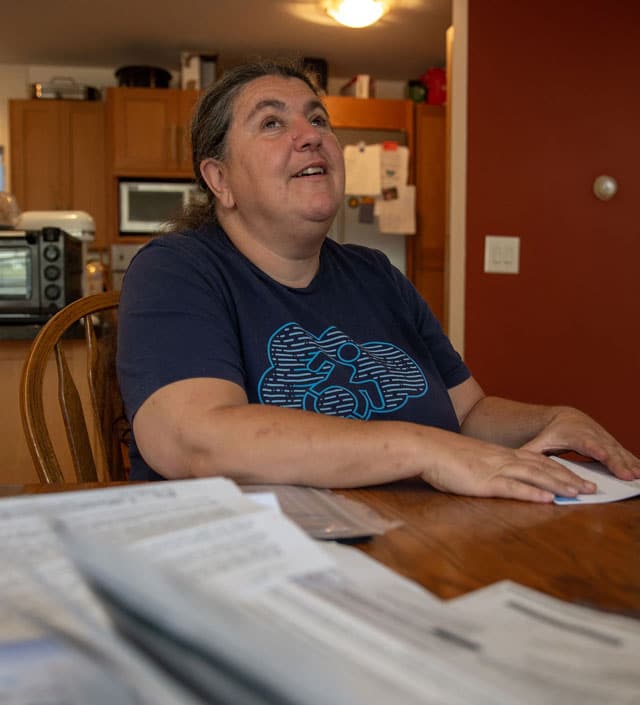Strong leadership from the top, recognition of one’s blind spots and metrics to support accountability are essential for creating and maintaining a diverse and inclusive workforce.
That’s the message shared by senior leadership team members of prominent financial services firms during the panel “Inclusion Best Practices” at the CFP Board Diversity Summit. The sixth annual summit, held Nov. 9 in Arlington, Va., drew over 300 attendees.
“One of the things to acknowledge is that sheer diversity is not sufficient and that there needs to be more than just having a varied depth of experiences in the room,” said Jen Auerbach-Rodriguez, head of strategic growth markets at Merrill Lynch Wealth Management. What also matters is fostering an environment where people feel included.
For example, “How ready do you come to a meeting to voice a differing set of perspectives, and what are the consequences of voicing that different set of perspectives?” she said. “It’s one thing to have your moment in the sun and speak your truth, speak your power, only for that to be a career-derailing moment” because “inclusively is not yet present in the room, unbeknownst to you, and that’s the end of your inclusivity.”
Ask employees to ‘dance’
Thomas Carroll, CFP, principal, president and incoming CEO at Atlanta-based RIA firm Homrich Berg, said he was moved when he entered the CFP Board conference and saw on the screen this quote from diversity advocate Verna Myers: “Diversity is the invitation to the dance; inclusion is being asked to dance.”
Myers’ quote, frequently repeated throughout the summit, is “about recognizing, appreciating, valuing and ultimately using all the skills and talents of every employee, every teammate in the firm,” said Carroll. This allows people to “bring their authentic selves to work every day,” he said, instead having to put up a shield.
For Sam Lalanne, head of diversity and inclusion for the Institutional Securities Group, Investment Management, and International at Morgan Stanley, “creating a culture of inclusion allows everyone, no matter what their backgrounds are, no matter what their experiences are, to reach their fullest potential.”
“We all have a responsibility, we all have an ability, to create that culture of inclusion or to remove it,” said Lalanne, through our words and actions. “We can use those words, we can use those actions, to build people up — our colleagues, those around us,” he said. “We can also use those same types of words and actions to tear people down.”
Leadership is paramount
“It would be very hard for the team to organically create a culture of inclusivity without the support of the senior leader or the local manager,” said Auerbach-Rodriguez. It’s also wrong to simply assume that you’re an inclusive leader “because you are a nice person or because you are diverse yourself,” she said, “because we all come with our own unconscious bias.”
“I would invite leaders to really challenge themselves and ask, ‘What have I done institutionally for my team so that we do have an inclusive culture?’” she said.
One way to do this is to hold one-on-one conversations with employees to find out why they “are motivated to come to work and do the job that they do,” she said. “If you can’t answer that question for every person on your team, to the same degree, to the same level of specificity, you probably have some blind spots yourself as a leader.”
“It’s not enough to be a diverse leader. It’s not enough to say you care about inclusion. You really have to lean into this idea that we probably all have some flaws and growing points ourselves, and I think acknowledging where the power lies,” she said.
Driving forces
Panel moderator Farnoosh Torabi, a journalist and the creator and host of the podcast So Money, asked the panelists when their firms started focusing more on diversity, equity and inclusion.
For Homrich Berg, the May 2020 murder of George Floyd was really a turning point, said Carroll. He spent a lot of time that summer speaking one-on-one “to underrepresented members of our team, Black members of our team,” he said. “However, that wasn’t enough.”
Homrich Berg then established its Diversity, Equity and Inclusion committee. “We’re a 34-year-old firm and we didn’t have this as a foundational part of how we thought about our business,” he said. “That’s a miss, I’ll readily acknowledge that, but we have made tremendous progress since that point and time.”
The firm’s DEI committee, which he chairs, meets monthly. “It’s incumbent upon me to lead from the front and make sure that this is part of the fabric and culture of our firm,” he said. The firm’s head of HR and chief risk officer are also permanent members of the committee. In addition, there are also six positions on the committee that rotate every other year.
Merrill Lynch Wealth Management started focusing more on diversity issues back in 2017. That’s when Auerbach-Rodriguez was asked to help think differently “about how to become a wealth provider not just of the present day but of the future,” she said. “We knew we needed to have a diverse workforce” to reflect the face of communities, and to help minority communities and women build more wealth.
When Lalanne joined Morgan Stanley in 2019, “before the world changed in our space,” he said, it was because the words inclusion and belonging were embedded in the firm’s core values and culture. “It felt like it wasn’t something that was a check-the-box,” he said.
A year later, the firm added a fifth core value for diversity and inclusion. Those five core values are part of the hiring and promotion process. Morgan Stanley also launched the Institute for Inclusion.
The institute is “not focused only on our internal efforts, but the efforts that we can make in larger society,” he said, including helping diverse communities.
Creating camaraderie and building skills
LaLanne spoke about the importance of mentorship and being there for employees. He recalled that during the financial crisis of 2008, a team leader who sat a couple of desks away from him stood on top of his table and shouted out, as loud as he could, “I don’t know what tomorrow’s gonna bring, I don’t have all the answers, but I’m not going anywhere, I’m right here. So if you want to talk, I’m right here.”
“He recognized that his role as a leader, as a manager, to create that space to bring everyone in, to make them feel like they belong there, that they are included,” said Lalanne. “The reality is, there are other leaders, his peers, that were hiding in their offices.” It continues to help him think about ways in which he can assist leaders help their teams, he said.
Carroll added, “Inclusion is way more about the heart than it is about the head.”
Additional Reading: Financial Planning: Progress But a Long Way to Go
Inclusive managers also have to be good about managing performance and providing feedback, said Auerbach-Rodriguez.
“It is the greatest gift to have someone who is willing to pull you aside and tell you, ‘You know, you landed this point, but you didn’t really land this point,’” she said. In addition, “[good] managers who know who the extroverts are, who know the people who are going to naturally dominate the conversation, do things to pull the introverts into the conversations so you’re ensuring that you hear everyone’s perspective.”
She also spoke about the importance of giving employees stretch assignments and saying, “Here’s why I believe that you’re the right person to do it and how I’m going to set you up to succeed. This is not a step for you to crash and burn.”
The power of data
The panelists also emphasized the importance of measuring and reporting data. For example, Lalanne noted that Morgan Stanley’s diversity inclusion report not only highlights the firm’s global initiatives around diversity and inclusion but also includes hiring numbers across different demographic groups for its 80,000-person workforce that spans 41 countries and jurisdictions.
The data is “a way of holding us accountable, not only internally but externally,” he said. “This is a public-facing document that anyone can go to.”
Community engagement
Morgan Stanley also conducts anonymous engagement surveys to manage employee sentiment and the feeling of inclusion. The data is then shared back to employees “with actions to solve for where perceived or real gaps are,” he said. The firm also engages with nonprofits, schools and its clients, which he says is another way of holding itself accountable.
Carroll said that Homrich Berg formally partners with Georgia State University to bring in diverse summer interns and offer a path to full-time employment. The RIA firm also provides a double-match for social-justice causes. During Indian American Heritage Month and other heritage months, it brings in small-business owners that sell food of the particular heritage.
Since Homrich Berg began its diversity efforts just two-and-a-half years ago, “our number of non-white employees at our firm has gone from 11% to 23%,” he said, “and the number of non-white representation in key roles in the firm, which we call ‘director and up,’ has grown 10%.”
“This is a marathon, not a sprint,” said Carroll.
Jerilyn Klein is editorial director of Rethinking65







